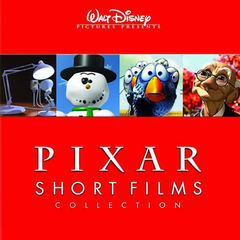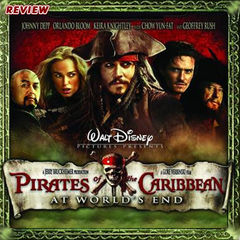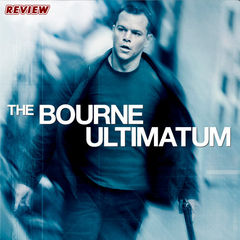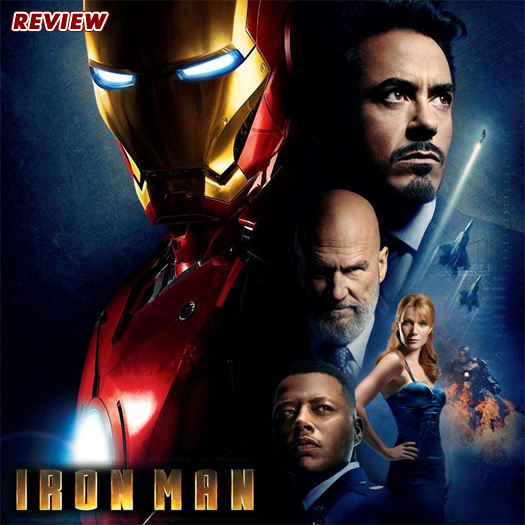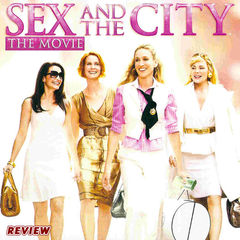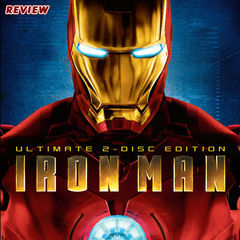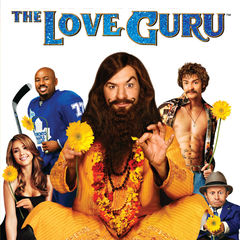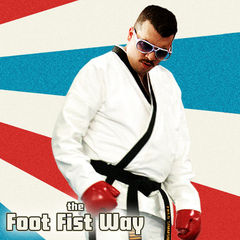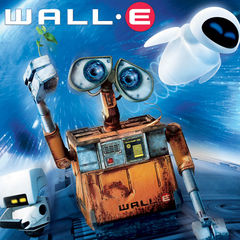DVD REVIEW – PIXAR SHORT FILMS COLLECTION, VOL. 1
November 15th, 2007 | by Tom









(1 votes, average: 1.00 out of 10)
In the golden age of cinema, audiences weren’t bombarded with commercials for Coca-Cola and wireless phone companies. They used to get a little more for their money. Newsreels, previews of coming attractions and even animated short films.
Modern audiences have become familiar with animation staples like Bugs Bunny and Tom & Jerry from constant reruns on televisions. But since the 1960’s, there have been few animated shorts to make it in front of a feature presentation.
Thank goodness for Pixar who keep the tradition alive with a delightful short before each of their theatrical releases. Finally, each of these shorts (along with some additional material) has been collected on DVD for the first time – The Pixar Short Films Collection, Volume 1.
The DVD collects 13 shorts from the company’s history. Films like “Gerri’s Game” and the Academy Award-winning “Tin Toy” audiences might already be familiar with. However more obscure films like “Red’s Dream” and “Knick Knack” may amuse. In a historical context, Pixar’s first effort “The Adventures of André & Wally B.” is fascinating if for no other reason than to demonstrate how far Pixar has come in it’s 20 year history.
It’s hard to say exactly who the audience for this collection is supposed to be. Animation enthusiasts will find plenty to examine in this collection, but casual fans may feel cheated by what’s included. Several of these films (having appeared in front of Pixar’s theatrical releases) have already been made available on those films corresponding DVD releases. I suppose the advantage is to have them all in one place, but that doesn’t exactly offset the price tag.
Each of the short films includes an audio commentary, which is valuable for further historical context or to highlight the small artistic touches that may have gone by unnoticed the first time around. However, some of the commentary is repetitive when compared to the collections lone extra feature, the documentary “Pixar Shorts: A Short History.”
The documentary itself is very interesting as it traces the steps of Pixar’s evolution as an offshoot of LucasArts in the 80’s, snapped up by Steve Jobs shortly thereafter and even their short stint as a computer processor and 3D software vendor. All of their early history is laid bare as a precursor to the world’s first fully computer animated movie, 1995’s Toy Story. People pretty much know the rest of the story from there out.
In the documentary, the original Pixar founders categorize themselves largely as nerds that got lucky. The goal was always to produce a completely computer animated feature. But it wasn’t feasible without experimentation. These guys were literally making it up as they went along – writing the programming and the software as they created. It was with benefactors like LucasFilm and Jobs that made that experimentation possible.
The Pixar crew is also quick to recognize that they weren’t the only team of effects men working toward this goal. They just got their first. A lot of credit is given to director John Lasseter for his creative vision in those early works that kept them one step ahead of the competition.
But the documentary isn’t the main attraction. In this case it’s the features. It’s hard to discuss all of them individually for their merits. Highlighting and specific shorts over others would be wholly subjective and pointless. But once you get beyond the initial experimental shorts and more into the professional grade stuff, there is lots of entertainment to be had. Even if you aren’t interested in the history of Pixar as a company, you’ll find enough here to laugh at and enjoy. It may not be worth the full price of admission if you aren’t Pixar nut like myself, but competitions will find it hard to resist.

Just in time for the holiday season, the studios are trotting out their summer blockbusters on DVD. Disney proves the rule with it’s release of Pirates of the Caribbean: At World’s End out on DVD today.
Much like it’s sometimes murky and crowded predecessor, Dead Man’s Chest, At World’s End plays a little bit better on the small screen. The amazingly rich details of the sets and effects work are kept somewhat more within a controllable scope on the small screen. It really allows you to drink everything in an appreciate the more subtle aspects of what is otherwise a bombastic action thriller.
Unfortunately, some things don’t improve with a reduced scope. While the performances of Johnny Depp, Geoffery Rush and Bill Nighy are largely bulletproof. Rush particularly attacks his roll of Barbosa with zeal. Keira Knightly and Orlando Bloom are as wooden as ever. Dialog is stilted, themes are muddled and there are so many interwoven plot points, it’s difficult to keep track (or care.) The issues I had with how the film was put together back in May still hold true here. For more detail on those opinions, you can read my original review here.
So why review At World’s End on DVD? Presumably for the extras! After all, this is a special 2-disc “limited edition” copy of the film that is apparently going back in the vault on September 30, 2008. If it’s so limited, one would think that the extras are spectacular, right?
Well, not quite.
“Bloopers of the Caribbean” is your standard collection of actors flubbing lines, tripping over the set and asking to “go again” – but not saying anything particularly clever or entertaining. There are only two deleted scenes that were cut for good reason and are equally as boring.
The rest of the bonus features are largely behind-the-scenes documentaries. Some are total fluff, meant to stroke the egos of their subjects – one about Chow Yun Fat and the other about Keith Richards. Much has been made about Johnny Depp’s inspiration for Jack Sparrow coming from the perennial Rolling Stone’s guitarist. But it’s evident in their interview while sitting side-by-side, Depp is trying to extend as much courtesy and politeness to Richards as possible. Meanwhile, his eyes are screaming “THIS GUY IS NUTS!”
I suppose, in hindsight, that’s kind of entertaining.
A few documentaries were interesting, but not entirely up my alley. “The Pirate Maestro: The Music of Hanz Zimmer” and a documentary about Penny Rose, the film’s costume designer were expertly done and add another layer of enjoyment to the film, but didn’t fire up my imagination.
The documentaries under the “Masters of Design” series focus on the propmasters behind Sau Feng’s map, Teague’s Code Book and the dressing of the Singapore set shot for the opening of the film are fascinating explorations into the level of detail provided for the film. The short on Crash McCreery and his design work on Davy Jone’s and his cursed crew was breathtaking. As spoken by one of the interviewees during one of the documentaries “these guys are winning Academy Awards for a reason.”
The big documentary is “Anatomy of a Scene: The Maelstrom” and it has to be seen to be believed. Two full-scale replicates of The Black Pearl and The Flying Dutchman were built inside a warehouse for the film’s climatic sea battle. To see the amount of detail, practical effects and integration with computer effects is mind-boggling and a real treat for people who are looking for ways to deconstruct scenes. Everything from the filming to the editing is on display here and it really gives you a sense of the enormous amount of strategic planning that goes into orchestrating these things.
In fact, I would even go so far to say that it bumped up my respect for the film a few notches. Sure the script had holes in it and the characterization was a little weak. But that’s not exactly why you watch these movies, is it? When you see the great level of care that comes into the process of creating something that has never been seen on-screen before, it forces you to reassess what it is you’re trying to take from the experience. In this way, the bonus features succeed.
Is the film worthy of your collection? Completionists like me will demand it, but frankly, it’s no go without it’s first half – Dead Man’s Chest. Disney had great success with the Pirates franchise. Consider how long it had been since the last pirate film of any sort or the likelyhood that another director will attempt to come along and try to top what’s been done here, it might be a while before we see another entry in the genre ever again! So, yeah – pick it up. It’s a good time.
When The Bourne Identity first hit theaters in 2002, it’s kinetic style, exotic shooting locations and grounded-in-reality approach to the spy game had critics calling for the head of James Bond. Jason Bourne was on the scene. A new action hero for a new generation.
While 2006’s Casino Royale proved there was still some life left in the nearly 50 year-old franchise, it was clear the producers of the Bond films could sense the younger generation nipping at it’s heels.
Released in theaters this summer, the capstone to the Bourne trilogy made it’s way to DVD on December 11. The Bourne Ultimatum sold 5.4 million copies it’s first six days of release, sending a clear message that Bond isn’t out of the woods yet.
Director Paul Greengrass returns to the Bourne franchise abandoning the jerky hand held shooting style and quick edits that made The Bourne Supremacy hard to follow. This time out, Greengrass’s direction is more controlled and more efficient – just like Jason Bourne himself.
In the last chapter, we catch up with Bourne literally minutes after the last film ended. Wounded and on the run, he’s not in hiding for long after a London journalist publishes a story about him with direct references to his past. As Bourne tries to uncover his source, so are the political powers hunting him trying to do the same. When their paths cross, it’s pretty much a trans-continental chase sequence from there on out.
That description is somewhat pat and not reflective of the true spirit of the film. There are moments of quiet tension in between action sequences. There are ambiguous implications when Bourne is reunited with Nicky Parsons (Julia Stiles) in Madrid. Meanwhile, on the home front, there is seething animosity between CIA Deputy Director Noah Vosen (David Strathairn) and Pam Landy (Joan Allen) about the best tactics to employ in order to neutralize Bourne as a threat to the CIA. Landy is ready to talk. Vosen is willing to kill whomever he has to in order to get to Bourne – even other agents.
“You start down this path, where does it end?” asks Landy
“It ends when we’ve won,” Vosen states emphatically – in the most clear allegory to certain wartime policies you’re likely to see in a summer action movie.
A hallmark of the series, the performances are all top notch from a wide variety of talents. On location shooting in Turin, London and Tangier give Jason Bourne a real-life playground to operate in. Practical effects in the action sequences sell everything on screen.
And the action sequences don’t fail to disappoint. A series of bait-and-switch routines as Bourne tries to lead his journalist out of the congested Waterloo train station is as tense and engaging as one could hope for. A rooftop chase sequence in Tangier is exhausting and exhilarating all at once. And the final car chase and shoot out in New York City concludes with gritty force. All of these sequences are expertly handled and leave you on the edge of your seat.
Extras on the DVD feel a little on the light side, but all of them are substantial and add appropriate shading to the film. Behind-the-scenes filming in each of the cities they filmed in reveals the logistical nightmares of capturing things on location. A featurette on the explosive, close quarters bathroom fight sequence demonstrates the intense preparation production goes through to deliver an authentic look and feel to hand to hand combat.
All in all, a great addition to your DVD collection and a must-have for action fans.

Long-time readers of this site are probably aware that I’ve been waiting for the film adaptation of Iron Man since it was announced in 2006. In many ways, I’ve been waiting for it my whole life.
I remember quite vividly where my infatuation with Iron Man began – at a truck stop on I-35.
I was 10 years old, traveling with my parents on a weekend get away to Kansas City. We pulled over at a truck stop to stretch our legs and pick up some snacks. Looking through the magazine rack, I saw the cover to Iron Man #218 peeking through. A man in a metal suit diving underwater. “Mom? Will you buy this for me?”
For the rest of that drive, I was glued to that book. I flipped through it over and over. I knew nothing about Iron Man at that point, but the concept of this high-tech man in shining armor struck me immediately and I haven’t really looked back since.
Over the years, my affinity for the character grew largely in part to his look and evolution, but also for the character flaws that are a staple of all Marvel characters.
Tony Stark, more than most, exemplifies this mold of the flawed hero. An alcoholic, a womanizer, a reckless risk-taker, a weapons designer and war profiteer. On paper, there’s not much to admire. But it’s how Stark overcame those flaws to become Iron Man that makes him one of the most emotionally rich characters in the Marvel universe.
Fortunately, all of these elements translate beautifully into Jon Favreau’s big screen version of Iron Man thanks, in large part, to his talented cast and the expert performance of Robert Downey Jr.

Downey Jr. plays Stark with his trademark detached charm. With a glass of bourbon in his hand, he jokes and kids – but all of it masks a profound disinterest and boredom with the fame and success his genius brought him. It’s not until a fateful trip to Afghanistan that Stark’s view of reality comes crashing down around him.
After demonstrating the destructive force of a newly designed missile to military brass, his convoy is attacked by insurgents armed with weapons of his own design. Mortally wounded, he is kidnapped, but kept alive by his attackers who employ another captured scientist named Yinsen to install an electromagnet into Stark’s chest to keep shrapnel from entering his heart and killing him.
Seeing first-hand the human toll of his weapons, Stark upgrades his power source and sets out to build a bulletproof suit of armor to aid in his escape. While the build up is slow, the unveiling of the Mark I armor is especially brutal and you get a real sense of the clunky, ground-shaking power of the crude design.
Back home, Stark immediately announces the end of weapons manufacturing days. As the value of his company plummets, Stark holes up in the basement garage of his cliffside Malibu home and begins to refine the suit that led to his salvation.
The second act of the film deals almost exclusively in this refinement, and it’s a joy to watch. Iron Man isn’t a hero who is delivered his power by circumstance. He literally builds it from the ground up. So it’s interesting to watch the process. After a serious of tests, when Stark decides to take the fight to the warlords who held him captive and destroy their weapons depot, the movie kicks into high gear.
Meanwhile, at home, Stark’s business partner (played with a “trust me” grin from a bald and bearded Jeff Bridges) tries to wrestle control of the company away and introduces the threat of the hulking Iron Monger to Stark’s Golden Avenger.
That’s a lot of exposition and, if anything, it’s Iron Man’s biggest hinderance. Origin stories are typically laborious and die-hard fans are left chomping at the bit for more superhero action while the rest of the audience catches up.
Iron Man is redeemed from this common pitfall thanks to the effervescent pop of its principal cast. Watching them all on screen together instantly brings credibility to the piece.
Downey Jr. is Tony Stark. There is no question about it. He understands the folly of ego and the valor in redemption. As his adversary, Bridges is a credible threat – as ruthless as Stark is brilliant and barely keeping his a seething torrent of angry and resentment in check.
Terrance Howard as Stark’s friend James “Rhodey” Rhodes plays an excellent straight man to Downey Jr’s wisecracks and Gweneth Paltrow as Pepper Potts matches wits round by round with Stark and is more winning and enjoyable in this performance than she has been in years!
If I have a complaint about the film it’s that the final confrontation isn’t as long as I would like. Also, Iron Man heads into battle at half power. I understand why the filmmakers did this in order for Stark to overcome the odds, use his brain instead of his brawn and come out on top looking like the hero… but there is a more satisfying display of the armor’s power at the end of the second act that feels much more cathartic.
Still, leave the audience wanting more, right? It’s probably a big reason I plan on seeing the film a second time. Not just to see more action, but to process everything more thoroughly. After 5 months in cold storage, Hollywood has awoke with a bright and bold action movie. It was like a feast and I was absorbing all of it. Now that I know where some of the punches land, it will be easier to go back and watch the film a little more relaxed.
As a reviewer, I’ve probably diminished my credibility when it comes to Iron Man. Even if the movie had been terrible, I probably still would have recommended it. So some of you might take what I say with a giant boulder of salt.
But the further away I get from it, the more I appreciate the simple elegance of it. Iron Man delivers in the ways that a big summer action movie should. It’s shot with a sense of urgency and impact, the set design is gorgeous, the performances are entertaining and the effects work is jaw-dropping.
After a crippling lack luster first quarter, Iron Man is the movie we’ve all been waiting for and it more than lives up to the hype.

DVD REVIEW – SEX AND THE CITY: THE MOVIE
September 25th, 2008 | by Tom









(6 votes, average: 2.83 out of 10)
Clear in my understanding that I am not a member of the targeted demo for Sex and the City: The Movie (on DVD September 23), I decided to do something a little unconventional and interivew my wife Cami and ask her questions about the film.
I concede that I show a little bit of bias in my line of questioning, but at least you’re getting a rebuttal from a fan of the series and not a concentrated blast of cynicism on my part. Frankly, I think Cami handles herself quite well as you can read for yourself below…
Tom Brazelton: What is it that you like about Sex and the City?
Cami Brazelton: The clothes, the “love conquers allness” of it all, the NYC backdrop….It’s an escape from my drab Iowa life in these harsh economic times.
TB: Did you feel the movie was a fair continuation of the television show?
CB: In a lot of ways I enjoyed the series finale better—it provided all the closure that I needed on the TV show in a magical, fairy tale sort of way. This was a nice revisit, but not at all necessary for me as a fan.
TB: What was your favorite part about the movie?
CB: When Charlotte poops her pants, of course!
TB: What was your least favorite part about the movie?
CB: Seeing SJP with no makeup in the scene where she’s in Mexico looking in the mirror. Scary!
TB: Do you feel the movie betrayed the show’s original concept by having Carrie marry Mr. Big and and accepting the “dowry” of a fabulous shoe closet?
CB: No…although the series touted the “women behaving as men” theme, the Carrie character always seemed a bit outside of that—she tended to prefer monogamous long=term relationships–Big, Aiden, Aleksandr Petrovsky. As a fan, you always knew that Carrie wanted commitment…she wanted to walk down the aisle one day and you knew that the only man that she would consider marrying was Big.
TB: Did you feel the promotion of Jennifer Hudson’s character was warranted when it came at the expense of established characters like Charlotte’s husband played by Evan Handler?
CB: Given that Jennifer Hudson’s performance was fresh, fun and a great way to balance the heaviness of the Carrie character, I was OK with the little we saw of Charlotte’s husband. The series probably explored the extent of the character: Jewish, lawer, loving husband and father.
TB: Considering the box office sucess of the film, would you watch a movie sequel? How do you feel about the movie’s conclusion celebrating Samantha’s 50th birthday and the women toasting “the next 50?”
CB: How else would it end?
What would the sequel be about? Carrie and Big having a child? Charlotte raising her daughters? Miranda still being a workaholic? I think a sequel would be boring and utterly predictable. I was fine with the ending…it shows that their friendship will endure for 50 more years.
TB: Were you at all disappointed by the lack of special features? (we were sent the bare-bones widescreen edition) Would you have paid more for the special edition DVD?
CB: Yes and yes.
TB: Final thoughts?
CB: I hop this intervue don’t make me sound dum.
And there you have it!
Sex and the City: The Movie is available to own on DVD, Blu-ray, On Demand and by download at iTunes. For more information, check out the official site at www.SexAndTheCityMovie.com
As any regular reader of the site knows, I’m very much “in the tank” as far as Iron Man is concerned. My affinity for the character and his history have fascinated me most of my life. When the movie came roaring out of the gate at the start of the blockbuster season in May, it was (to my relief) a solidly executed, fantastically detailed, humorous and exciting exploration into the birth of Iron Man and his inventor Tony Stark.
My opinion of the film has not changed since I reviewed the theatrical release in May. If anything, my opinion of it has only grown stronger. True, The Dark Knight may have bested Iron Man in box office, fan and critical approval – but was it fun? Could you sit down and watch the grim and gritty tale of Gotham’s protector over and over again or would it be too exhausting. For my money, Iron Man was the movie of 2008.
To that end, what can be said about the release of Iron Man on DVD? Plenty, as it turns out.
If you’re thinking about buying the standard wide screen edition of the film (and if you were planning on buying the full-screen edition, you can leave right now), shell out the extra bucks and get the ultimate 2-disc edition. When they call it “ultimate,” they’re not kidding. There are nearly 4 hours of extras on this bad boy and hardly any of them disappoint.
There are your boilerplate deleted or expanded scenes, and, for the most part, you can see why they were cut. There are more than a few extended scenes that take place at Andrews Air Force Base that don’t add much to the narrative. You kind of get the feeling that they were just appreciative to the Department of Defense for giving them access and they wanted to capture as much as possible before they were kicked off the base.
There are other scenes that were filmed that put a different spin on things. For example, a scene where Tony organizes a party in Dubai to put him closer to the insurgents who captured him when he flies in with the Mark III suit and destroys their weapons depot. Returning from his encounter with the two jets, badly damaged from battle, Pepper discovers Tony in the armor helmet off and enjoying a scotch while the other party-goers sleep it off. Not as funny as the “Admit it – this isn’t the worst thing you’ve caught me doing” line from the original movie, and it’s easy to see why these scenes were cut.
On the second disc, there is an an exhaustive 7-part documentary called “I Am Iron Man” the reveals the making-of process with more detail than I can seem to recall from a full-scale Hollywood action movie. They show nearly everything from concept to competition. They show a great deal of the pre-production work, the concept art, story pitch sessions with the Marvel editorial brain trust, the body casting sessions for star Robert Downey Jr., the effects development, sound development, putting the suit on, taking the suit off… everything. Some might find this amount of depth grueling. I loved every minute of it. I never been this happy watching DVD extras in my life. Admittedly, it’s a lot to process in one sitting. I had to step away from it and come back at a few different points. But for anyone who is interested in the movie-making process even in a general sense, this documentary will be of value to them.
Fun fact: Director Jon Favreau lost over 70-pounds during production on the film to play the part of Happy Hogan. Most telling, he talked about adjustments that needed to be made to his wardrobe as well as his wigs! He basically admits he was a fat head at the start of production.
But I digress.
Additional features on the disc include a second 6-part documentary called “History of the Hero” which chronicles the evolution of the character in the comic books over the last 45 years. It not only does a good job of bringing viewers unfamiliar with the comics up to speed, but it puts some of the larger story points of the movie into context as well as set the stage for areas of the character’s history that are sure to be covered in subsequent movie sequels.
The featurette “Wired: The Visual Effects of Iron Man” does an excellent job of highlighting the artists behind Iron Man’s near-seamless digital effects work. There’s even an extended portion of the piece dedicated to the development of Tony Stark’s inside-the-helmet view or HUD – Head’s Up Display.
The filmmakers had a considerable challenge showcasing Robert Downey Jr. in the armor when his face and expressions can’t be seen. The development of the HUD was a brilliant solution. Not only did it bring you inside the armor, but it lent emotional weight to all of the armor sequences by allowing us to feel what Tony feels, his exhilaration, his fear, his struggle. The amount of detail that went into the tactical display of information inside the HUD will astound you. Most of those scenes only show up for a fraction of a second in the movie. But every piece of information you see has a purpose and it is a great example of the love and attention to detail all of the crew members put in on this film.
The producers aren’t without a sense of humor, though. They also included The Onion’s parody news clip “Wildly Popular Iron Man Trailer to be Adapted into Full Length Film,” which was a welcome surprise.
There are still more extras to be found on the disc, including Robert Downey Jr’s screen test, a scene breakdown between Downey Jr. and Jeff Bridges and still galleries containing over 175 photos. But going into it at this point would be overkill.
Obviously I’m recommending this DVD as highly as I can. There are a few different bonus editions of the film floating around depending on where you shop. Wal-Mart, Target and Best Buy all have collector’s editions of the ultimate 2-disc set with bonuses including the pilot to the upcoming animated Iron Man: Armored Avengers, a helmet-shaped DVD case and mini-bust of Iron Man respectively. Whichever one you choose to go with is totally up to you. What counts is the DVD inside – and this is one of the biggest bangs for you buck that you’re likely to get all year.
When trailers and commercials for Mike Myers first on screen comedy outing in 5 years, critical reaction in our household was one of puzzlement. My wife and I are two of the biggest Mike Myers fans you’ll find. But what’s up with all of the gags lifted out of the three previous Austin Powers movie? And your tacitly making fun of Hinduism? Really? Is that wise? Our stink meters went off.
Turns out we were right. After calls for boycott from leading Hindu groups and a dismal total domestic gross of $32 million, The Love Guru turned out to be the greatest misstep of Mike Myers’ career.
I didn’t see the movie in theaters, but I reserved judgment completely until the film came out on DVD. Deep down I was hoping that there was at least something redeemable about the film. There’s a few things to like about The Love Guru, but a lot more things to hate.
If you’re unfamiliar with the plot, Myers plays an American stranded in an Indian orphanage after his parents are killed during missionary work (whatever) and seeks knowledge from Guru Tugginmypudha (played by Ben Kingsley – who apparently has lost the ability to say “no” to anything). Myers takes his spiritual guidance and transforms it into a multi-million dollar self-help empire. But he is dissatisfied because he is still number two compared to Deepak Chopra.
As the Guru Pitka, Myers is difficult to like. He speaks in platitudes hidden inside verbal riddles (“Intimacy: Or ‘Into Me, I see.” “What is the Bible except ‘B.asic I.nstructions B.efore L.eaving E.arth?”) Anyone who gets suckered into this kind of spiritual guidance needs all the self-help they can get.
Compounding the problem. Guru Pitka does not demonstrate any of the behaviors of a supposed Holy Man. When opportunity knocks in the form of Jessica Alba (as the owner of the Toronto Maple Leafs) seeking the Guru’s guidance to reunite their star player with his estranged wife, the Guru is not motivated by helping the player. He is motivated by the $2 million he’s being paid and the opportunity to appear on Oprah should he be successful.
Of course there is a third act revelation where the Guru learns the errors of his ways, amends the shortcuts he took toward bringing the couple back together and frees himself from feeling inferior to Deepak Chopra, but it all comes too late. Who wants to spend time with this selfish ass for two hours?
That’s another thing: SEVERAL times in this movie other characters refer to Pitka disparagingly – calling him an ass or a moron – and it’s hard not to disagree. In addition to his spiritual blather, Myers infuses the Guru with an arsenal of playground antics and taunts meant to “regress” uptight squares but are really only effective for bridging the gap with the audience who hazily remember “Oh, yeah. I remember ‘Milk, milk, lemonade – around the corner fudge is made’.”
What makes matters worse is that the only one laughing at any of Pitka’s jokes is Pitka himself. Hooting and sniggering like an exiled villain from the 1960’s Batman TV show, Pitka’s childlike glee isn’t endearing. It’s annoying.
For as grating as the character is, Myers at least plays him enthusiastically. I think Myers still has value as a comedic voice. His problem in this case was convincing himself that audiences would align themselves with his clear preoccupation for Eastern spirituality. But, hey… when you can make a movie about a slacker filming a local access cable show in his basement and a time-displaced Lothario super spy from the ’60s and have them be huge hits, why wouldn’t you think anything was possible?
As far as the rest of the cast goes, they perform amiably. That is, at least as well as they would have in any other comedy of this nature. Justin Timberlake shows up as a French Canadian goalie and the main antagonist. I’m guessing someone told him to approach the role like Pepe Le Pew, because that’s what he sounds like.
Verne Troyer is on hand as a foul-mouthed coach and actually gets to spit lines this time. Beyond that, it’s a cavalcade of cameos from the likes of Jessica Simpson, The Daily Show’s John Oliver, Val Kimer, Mariska Hargitay, Stephen Colbert and Jim Gaffigan.
Personally, I think it’s a shame that Romany Malco as hockey superstar Darren Roanoke can’t find better material to plug into. I’ve enjoyed him in nearly every movie he’s been in and The Love Guru was poised to break him into a wider audience. This is, if the movie were able to draw an audience.
In terms of extra features, the DVD doesn’t skim. But most of them are forgettable. It wasn’t particularly interesting to sit through “One Hellava Elephant,” which spends too much time with the effects supervisor responsible for creating the one-quarter top reproduction of the elephant Mike Myers rides in the film. Nor was it particularly interesting to watch “Hockey Training For Actors,” which details the process in which Malco and Timberlake prepared for their scenes on the ice. The blooper reel is a fair diversion and the deleted scenes and outtakes (while uneven in quality) are sometimes funnier than what was left in!
The best featurette on the DVD is “Back In The Booth With Trent and Jay.” Trent and Jay being the color commentators for the hockey game sequences as played by Jim Gaffigan and Stephen Colbert. The featurette collects their improvisations. Colbert owns the booth with his performance as the drug addicted and relapsing Jay Kell, but Gaffigan gives it right back as the straight man delivering several sharp lines of his own. Would it be too much to ask for a movie starring these two?
Overall The Love Guru lives up to it’s unfortunate reputation. I take no joy in stating that, but it is what it is. Hardcore Mike Myers fans might find a few things to enjoy here. But the rest of us might be better off snuggling up with a copy of Wayne’s World until this all blows over.
In the red-band trailer for The Foot Fist Way (caution: NSFW), we are told that the film was slipped to comedian Will Ferrell and writer/director Adam McKay and that they loved it so much, they wanted to share it with the rest of us. It’s easy to see why. Danny McBride as the sloe-eyed, drawling Tae Kwon Do instructor Fred Simmons falls perfectly in line with the string of over-confident, vulgar and ultimately clueless jocks Ferrell has played over the years in movies like Talladega Nights, Blades of Glory and Semi-Pro. Clearly they have found a kindred spirit in McBride.
I took Ferrell and McKay’s recommendation of this film at face value. I assumed if they are quoting it constantly (as the trailer says) that I would enjoy it immensely, considering the amount of time I waste quoting their movies.
That said, there isn’t much to The Foot Fist Way that I thought was overwhelmingly hilarious. A funny turn of the phrase here or there, but nothing so wickedly funny that I could see myself repeating over and over again. Frankly, I found McBride funnier and more effective in the movies he’s had small roles in this year – both Pineapple Express and Tropic Thunder.
Nathan Lee of The New York Times called The Foot Fist Way “The best thing of its kind since Napoleon Dynamite.” That’s not an accurate assessment. I’m thinking that Mr. Lee remembered the “Rex Kwan Do” scenes with Diedrich Bader and went for an easy comparison.
The Foot Fist Way is shot more in the mock-umentary style and does a fair job of depicting the fabricated rigors of Tae Kwon Do from the perspective of those that take the sport seriously. As a student of the practice for three years (brown belt, second degree, bitches!), a lot of it rang true. Bowing to the flag, bowing to the senior student, the flailing arms of uncoordinated children and the woefully mis-matched sparring exercises. But the movie is never weird for the sake of it like Napoleon Dynamite is.
Instead, the movie plays more like a calling card for McBride because it showcases him almost entirely. The supporting cast is 100% amatuer hour, leaving very little for McBride to work with beyond someone staring at him in disbelief over the “outrageous” things he says. The problem is, McBride as Simmons isn’t so much outrageous as he is deluded.
Sporting an unfortunate crew cut, mustache and a pair of jean shorts, McBride infuses Simmons with the kind of misplaced confidence normally reserved for cops who used to be jocks and who now flex their authority over others. Simmons berates children, constantly exposes the weakness or lack of self-confidence in others and is generally creepy and unpleasant to be around. You don’t feel particularly bad for him when his wife cheats on him or when his action-star hero Chuck “The Truck” Wallace turns out to be a jerk.
Of course Simmons finds redemption in the third act, but he doesn’t exactly become a better person. All he manages to do is reclaim the power and control that has been slowly stripped away from him during the course of the movie. For a character whose self-confidence is paramount, that’s the most he can ask for.
Extras are plentiful on this DVD. It features a DVD commentary track from the actors and writers, more than two dozen deleted scenes, a couple of blown takes and an alternate ending that will shock you. A behind-the-scenes featurette plays more like an extended music video shot in grainy Super-8. But otherwise, the extras do not disappoint.
The Foot Fist Way was an accomplishment in the sense that it brought a new comedic voice to the fore with Danny McBride. So far, I think we’ve only seen a fraction of what he can do. But don’t look to this movie as the be-all, end-all of quotable sports doofus comedies like it was advertised. Approach it with reasonable expectations and you’ll find it a harmless diversion.
I am remiss to admit that I did not feature a review for Pixar’s 9th wonderful feature film Wall·E when it came to theaters in June of this year. Not only do I find it one of the company’s most heartwarming pictures but I also consider it to be one of the best films of the year.
Fortunately, we have the DVD release to reflect on and take the time to fully absorb the brilliance that is Wall·E.
For the uninitiated, Wall·E is a small, boxy robot left on Earth to clean up the mess left behind by humanity as they have shuttled themselves off-world on the dime of the global corporation Buy N Large. Our Wall·E is one of many, but the only one left still functioning. Day in and day out he performs the tasks he was programed to do – scoop trash into his tiny frame, compact it into cubes and stack them into spirling skyscrapers. He does his work efficiently, with no complaints… and totally alone.
Centuries in isolation have caused Wall·E to develop a personality. Like a beachcomber, he collects odd trinkets in an attempt to understand the history of a society that has long since abandoned him. He collects spoons and forks, hubcaps and adoringly watches an old videotape of Hello, Dolly – longingly looking for companionship.
Companionship comes in the form of a sleek and elegant probe droid named EVE, sent to Earth to search for signs of plant life. What follows is an adventure that takes Wall·E off Earth and reconnecting with the remnants of humanity living on-board a luxury star cruiser before leading them home.
The commentary track from director Andrew Stanton reveals a lot. While he admit that the movie hits on themes of environmentalism, consumerism and some of the more slothful tendencies of humans coddled by technology, he never set out to make a “message” movie. Stanton identifies himself as the type of person who likes to keep his politics to himself and was not interested in preaching to the audience. The themes established in the film developed out of the “reverse engineering” of the film’s core concept – a robot left on Earth all by himself and what would that feel like?
Stanton’s commentary reveals a lot about Pixar’s film making process. They establish a simple premise and start asking questions.
“Okay, he’s a robot alone on Earth? What is he doing there? He’s cleaning up. He’s a janitor. Why? Because that seems like a lonely job to do. Why is he alone? Because humanity left Earth. Why? Rampant consumerism ruined the planet. Oh, so he’s cleaning up what they left behind? Yeah! Are there other robots helping him? There were, but the broke down. So then he must have been working for a very long time? Let’s say 700 years. But he doesn’t spend the entire movie by himself? How do we introduce conflict? A probe robot visits Earth. What’s it doing? Looking for plant life. Why? Because then humanity can come back to Earth.”
And so on and so on. I reveals a simple extrapolation process in the writing and gives you the impression that the film’s “message” was a lot less deliberate and serious than some people took it.
In addition to the movie, the three disc special edition contains bountiful extras well worth your time. Most stunning is a deleted scene introduced by Stanton that was pulled from the film in the 11th hour. It’s the trash compactor scene right before the third act where, instead of Wall·E being damaged, it’s EVE who is nearly beyond repair. As Stanton explains, the scene was in the movie all the way up until test screenings. Meaning it had cleared the years of script revisions, storyboards, animatics and made it’s way to full render. This NEVER happens in animated movies, much less computer animated movies that require hundreds of hours of rendering time. It wasn’t until the test screening that Stanton realized his mistake and completely reconfigured the last act of the film. For the rarity of this alone, the scene is fascinating.
The extras also include an hour and a half long documentary called The Pixar Story, which reveals the history and inner workings of the company, excellent featurettes on sound design, visual design, set design, character development and score and – as advertised – a hilarious new short called Burn·E featuring the trials and tribulations of a service robot trapped outside the hull of the ship as seen in the movie.
I strongly believe that Wall·E is a film we’ll still be talking about 50 years from now. Not just from it’s timely message (accidental or not), but for the risks taken by Stanton and Pixar to deliver an emotional and engaging story that makes you care about robots in a way you never thought possible. It’s economical and engaging story will be something families and film buffs will be returning to year after year.
Finally, Tom and I were able to catch an Academy Award-nominated film: Slumdog Millionaire. And, it didn’t disappoint. I felt myself biting my nails, crying, laughing, turning away in disgust (at the jumping in a lake of poop scene) and cheering for the main characters of this movie. One thing that amazed me was the director’s unapologetic snapshot of the human condition of the Indian people over the last twenty years. The child actors in this film were outstanding. Their performances made me want to hold Henry just a little bit tighter when I hug him each night before he goes to bed.
Speaking of Henry, we’re entering a phase of Time Outs, him asking “why?” and for some reason, jumping on furniture every chance he gets. Instead of sitting and participating in his regular Saturday morning music class, he announces “I’m running away!” and hightails it out the door. Is this a sign of things to come or merely a phase? Judging by the perpetual twinkle in his eye, and his bionic-man energy level, I’m guessing we’re going to be dealing with things like this for a long time! We can’t believe he’ll be two years old next month, and I don’t know about you all, but I’d love to see him appear in the comic once in awhile.
What do you think? Would adding Henry to the comic mean it’s finally jumping the shark? Or did it scale the heights of sharkdom years ago?
Related Posts ¬
| Aug 20, 2003 | LET ME AIR IT OUT FOR YA |
